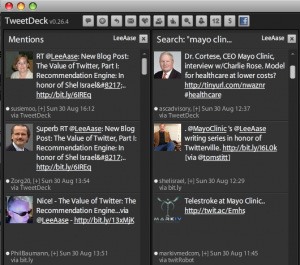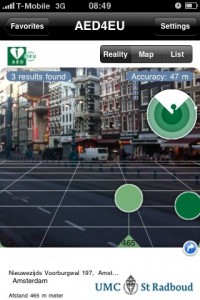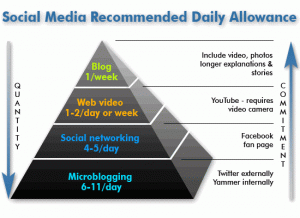In Part I of this series in honor of @shelisrael and his new book “Twitterville,” I said Twitter is valuable as a “recommendation engine” for interesting Web content. Many people see Twitter as a good way to broadcast messages from your organization, and we’ll get to some of those uses in later posts. But even before you’re ready to take the official plunge into active organizational use of Twitter, you can gather lots of information on what people are saying about your organization.

To paraphrase Yogi Berra, “You can hear a lot just by listening.”
I use Tweetdeck as my desktop productivity enhancer for Twitter for several reasons, as I describe in Twitter 106. (I like CoTweet and Hootsuite as Web-based power applications, particularly for advance scheduling of tweets.) Tweetdeck is great for listening and immediate interactions, and by setting up a fairly sensitive, highly specific search term in one of the panes (as described in Twitter 131) and putting that next to my “Mentions” pane I can see at a glance whether someone is tweeting about me, Mayo Clinic or @mayoclinic.

That’s how I met Tom Vanderwell (@tvanderwell) in March, as I described in this post at the time. He had mentioned Mayo Clinic in a tweet on a Sunday night, and because it came up in my Tweetdeck, and because I engaged with him in conversation, it led to us having a real-life meeting in Grand Rapids, Mich. just three days later.
What are the odds of something like that happening? I don’t know, but I can tell you for sure that they’re as close to zero as you can imagine if you’re not listening and engaging via Twitter.
But that’s not the end of the story.
Tom and I connected a couple more times in subsequent months…the first of which was when he joined us by phone for Tweetcamp II. A month or so later, when I was looking for examples of small businesses using social media, we interacted again by Twitter, phone and email, which led to this post.
We connected again earlier this month, when I traveled to Tom’s hometown of Grand Rapids to celebrate my granddaughter Evelyn’s first birthday. I tweeted Tom in advance, asking if he would be willing to get together so I could interview him for a couple of stories, and he quickly agreed.
So on Evelyn’s birthday, two weeks ago today, I stopped over at Tom’s home and interviewed him with his own Flip video camera (he had taken my advice from our March meeting and got one!) about his experience as a Mayo Clinic patient, and how he has used blogging and Twitter for his business.
Tom’s Mayo Clinic interview is here on our Sharing Mayo Clinic blog. The next post in this series will feature Tom’s perspectives on Twitter, and later I will have another post on Tom’s use of blogging.
But let’s quickly review the benefits I’ve seen personally, just in this case, by listening and connecting through Twitter:
- I’ve made a personal friend. Tom and I have a lot in common, as we’ve discovered in our two face-to-face meetings and via our electronic interactions.
- I’ve learned from someone who is using social media in another industry, and how he is finding social media practical and profitable. And I’m getting to share those insights with you.
- I’ve met a Mayo Clinic patient who was enthusiastic about sharing his experiences on our Sharing Mayo Clinic blog.
That’s a lot of value for my investment in Twitter…and it’s only one case study.



